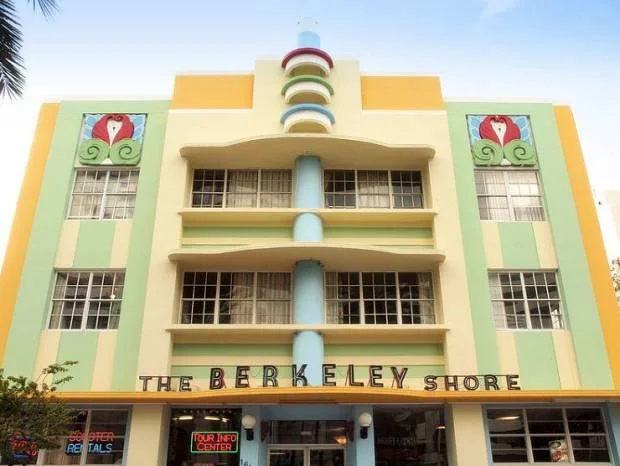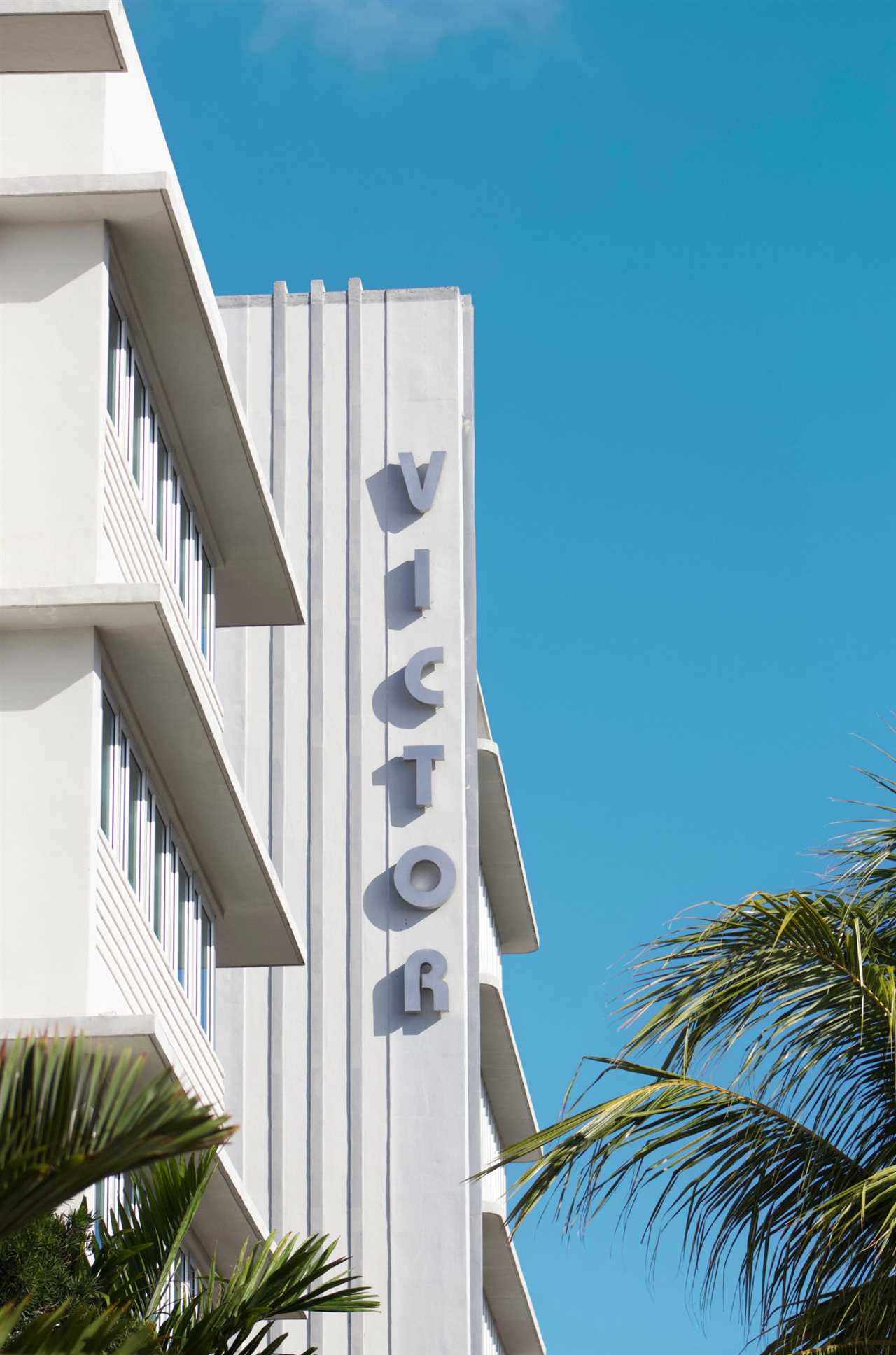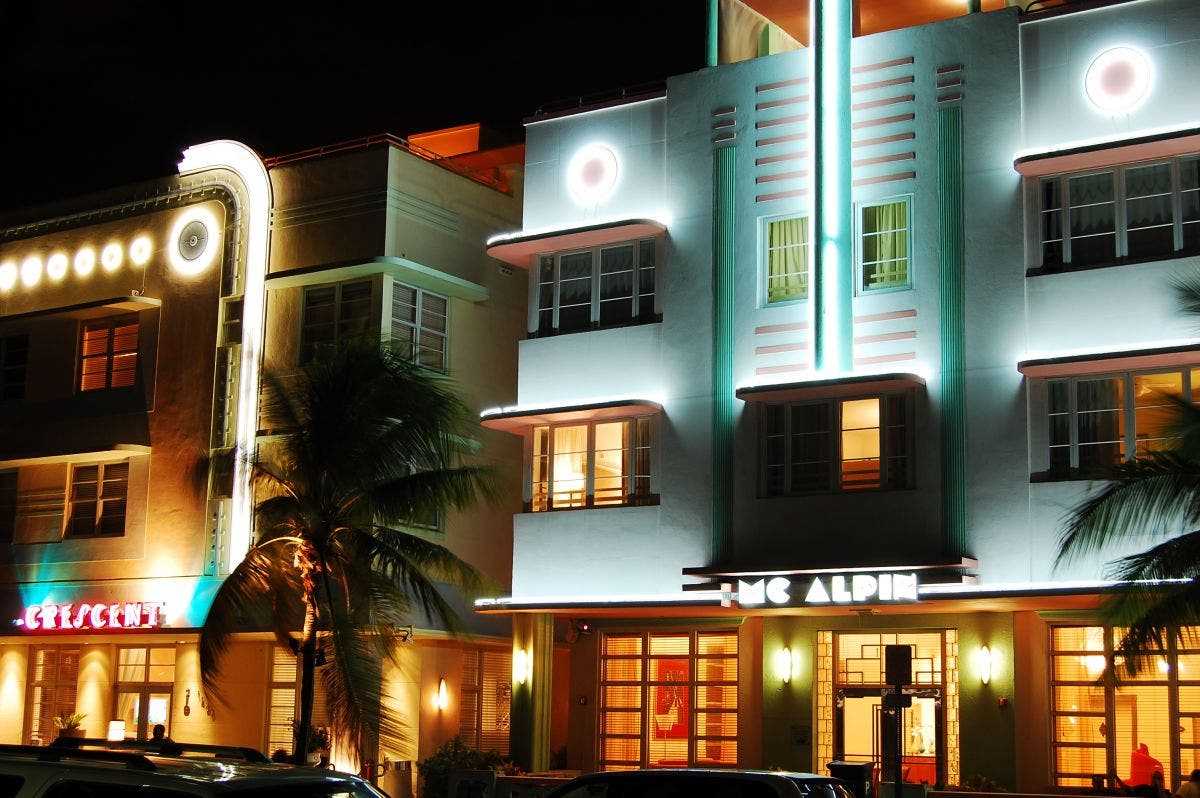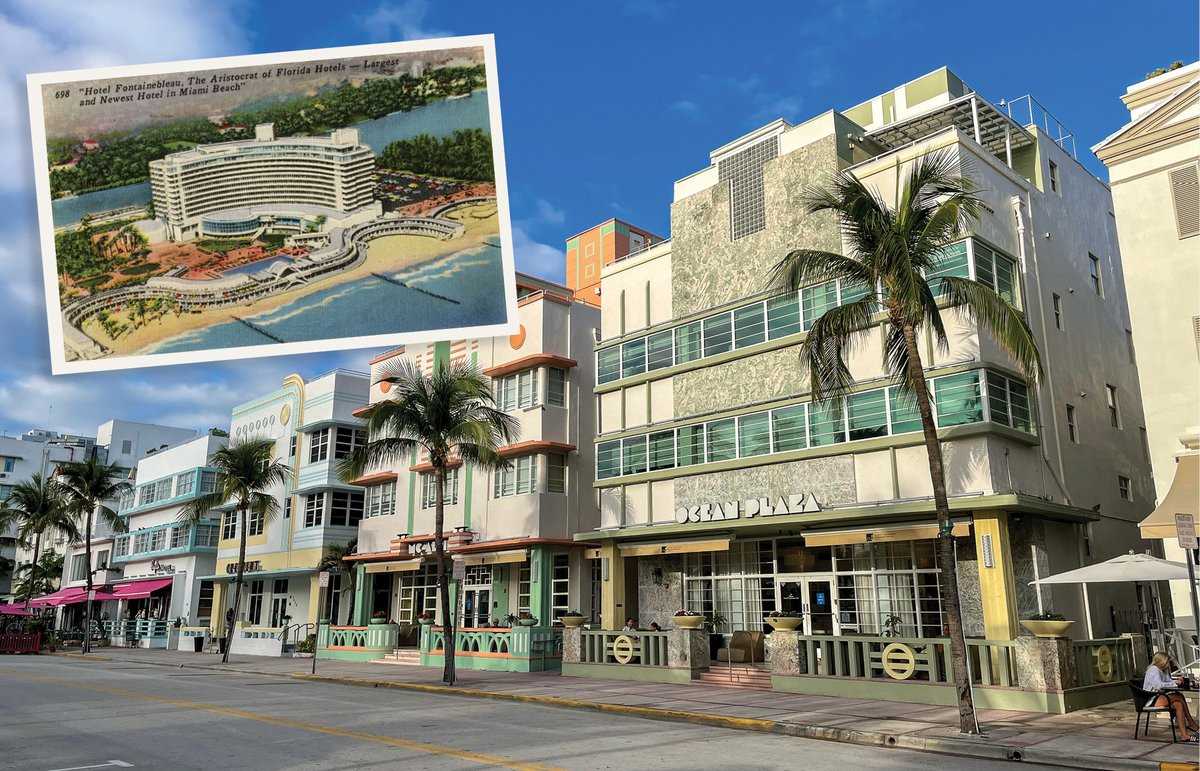
When strolling down the streets of Miami, one can’t help but be captivated by the stunning art deco architecture that lines the city’s thoroughfares. The combination of elegance, glamour, and vintage charm is what sets Miami apart from any other city in the world.
The art deco movement emerged in the 1920s as a response to the opulence and excess of the Roaring Twenties. It was a style characterized by clean lines, geometric shapes, and bold colors. In Miami, the art deco movement found its perfect canvas, with the city’s sunny climate and vibrant energy serving as the ideal backdrop for these iconic designs.
As you wander through the streets of Miami’s art deco district, you’ll find yourself transported back to a time of glitz and glamour. The meticulously designed buildings, adorned with intricate detailing and adorned with neon signs, evoke a sense of nostalgia for an era of decadence and indulgence.
But it’s not just the buildings themselves that make Miami’s art deco street design so special. It’s the way the entire neighborhood comes together to create a cohesive aesthetic. From the carefully curated storefronts to the perfectly manicured palm trees, every aspect of the street design feels deliberate and intentional.

Art Deco, short for Arts Décoratifs, is a style that emerged in the 1920s and 1930s. It originated in France after the First World War and quickly spread around the world. The movement was characterized by its modern, sleek design and its use of luxurious materials.
Art Deco drew inspiration from various artistic and cultural influences, including Cubism, Futurism, and the artistic traditions of ancient Egypt and Africa. It aimed to create a style that was both elegant and innovative, combining traditional craftsmanship with machine-made materials and techniques.
Origins of Art Deco

The roots of Art Deco can be traced back to the Exposition Internationale des Arts Décoratifs et Industriels Modernes (International Exhibition of Decorative Arts and Modern Industries) held in Paris in 1925. This exhibition showcased a wide range of decorative arts, including furniture, jewelry, fashion, and architecture.
The exhibition was a response to the new industrial age and aimed to celebrate the achievements of modern industry while emphasizing the importance of design and craftsmanship. It was during this exhibition that the term “Art Deco” was coined, describing the emerging style that was characterized by its geometric shapes, bold colors, and luxurious materials.
Characteristics of Art Deco

Art Deco is known for its symmetry, clean lines, and geometric forms. It often features decorative motifs such as sunbursts, chevrons, and stepped patterns. The style embraced new materials such as chrome, glass, and plastic, which were used to create sleek, futuristic designs.
Art Deco was not limited to one form of art or design but influenced various disciplines, including architecture, interior design, fashion, and graphic design. Famous examples of Art Deco architecture can be found in major cities around the world, including the iconic Chrysler Building in New York City and the Palais de Tokyo in Paris.
Despite its popularity in the 1920s and 1930s, the Art Deco movement declined in the years following World War II. However, it experienced a revival in the 1980s and continues to influence contemporary design to this day, with its timeless elegance, glamour, and vintage appeal.
Art Deco and Miami

Miami is known for its vibrant and eclectic art scene, and one of the most iconic styles found in the city is Art Deco. The Art Deco movement emerged in the 1920s and 1930s, and Miami became one of the hotspots for this glamorous and elegant style.
The Art Deco buildings of Miami are characterized by their bold geometric shapes, vibrant colors, and decorative motifs. The architecture reflects the optimism and glamour of the era, with streamlined forms and sleek materials such as glass and chrome. The buildings often feature motifs inspired by nature, such as palm fronds and seashells, as well as elements of Egyptian and Mayan design.
Today, the Art Deco buildings of Miami are not only cherished for their architectural significance, but also for their historical value. They serve as a reminder of a bygone era, when Miami was a playground for the wealthy and famous. The buildings have been carefully preserved and restored, and many of them have become landmarks and tourist attractions.
Walking down the streets of Miami, you can’t help but be captivated by the Art Deco designs that line the city. The buildings exude a sense of elegance and sophistication, transporting you back to the glamorous days of the 1920s and 1930s. The combination of the city’s tropical climate and the Art Deco style creates a unique and vibrant atmosphere that is truly one-of-a-kind.
Whether you’re a history buff, an architecture enthusiast, or simply someone who appreciates beauty, Miami’s Art Deco buildings are a must-see. They are a testament to the city’s rich cultural heritage and a reminder of the timeless allure of this elegant and glamorous style.
Exploring Art Deco Street Architecture in Miami

Miami is known for its vibrant and colorful art deco architecture, which can be seen throughout the city. This unique architectural style emerged in the 1920s and 1930s and is characterized by its bold geometric shapes, pastel colors, and intricate decorative detailing.
One of the best ways to experience art deco street architecture in Miami is by taking a leisurely stroll along Ocean Drive in the famous South Beach neighborhood. Here, you can marvel at the stunning facades of the art deco buildings, which have been beautifully preserved and restored.
| The architecture of art deco buildings in Miami is truly a feast for the eyes. The facades feature symmetrical designs, with clean lines and stylized motifs such as sunbursts and palm trees. The pastel color palette, which includes shades of pink, mint green, and turquoise, adds to the overall elegance and glamour of the streetscape. | One of the most iconic examples of art deco architecture in Miami is the Colony Hotel, located on Ocean Drive. This striking hotel, built in 1935, is a prime example of the art deco style. Its facade is adorned with decorative elements, such as sculptural reliefs and vertical piers, which are quintessential features of the art deco aesthetic. |
As you continue your exploration of art deco street architecture in Miami, you’ll come across numerous other notable buildings, such as the Carlyle Hotel, the Cardozo Hotel, and the Waldorf Towers. Each of these buildings has its own unique charm and contributes to the overall ambiance of the area.
Colors and Patterns in Art Deco Street Design

The Art Deco street design in Miami is known for its vibrant and bold color palette. The combination of bright hues and geometric patterns creates a visually stunning and lively atmosphere.
Color Palette

The color palette of Art Deco street design includes rich and vibrant shades such as turquoise, coral, lavender, and gold. These colors are often used in combination with black and white to create contrast and emphasize the decorative elements. The bold and saturated colors bring a sense of energy and vibrancy to the streets, reflecting the spirit of the Art Deco era.
One of the most iconic color combinations in Art Deco street design is the use of pastel shades, particularly in the iconic Miami Beach lifeguard stations. These pastel colors, such as pink, mint green, and baby blue, create a playful and whimsical atmosphere, reminiscent of the glamorous and carefree lifestyle of the 1920s and 1930s.
Geometric Patterns

Geometric patterns play a crucial role in Art Deco street design. They can be found in various forms, including zigzags, chevrons, sunbursts, and stepped patterns. These patterns are often incorporated into architectural details, such as window frames, doorways, and balconies, as well as in decorative elements, such as railings and streetlights.
The use of geometric patterns adds visual interest and dynamism to the streets, creating a sense of movement and rhythm. They are often combined with the bold color palette to create a striking visual impact. The symmetry and repetition in these patterns reflect the desire for order and balance, which were central to the Art Deco style.
Street Art: A Modern Perspective on Art Deco

Art Deco street design in Miami is not just about elegant buildings and glamorous hotels. It is also about the vibrant and dynamic street art scene that has emerged in recent years. Street art, with its bold colors and daring designs, has become a modern interpretation of the Art Deco movement.
Art Deco was known for its geometric shapes and symmetrical patterns, and these features are often found in street art as well. Artists use the walls of buildings as their canvas, creating large-scale murals that capture the essence of the Art Deco style. The combination of bright colors and intricate details brings a new level of dynamism to the streets of Miami.
The Evolution of Street Art

Street art started as an act of rebellion and self-expression, with artists using public spaces to convey their messages. Over time, it has evolved into a recognized form of art, with artists from all over the world showcasing their talent on the streets of Miami. The Art Deco movement, with its emphasis on individualism and creativity, aligns perfectly with the spirit of street art.
Today, street art in Miami goes beyond mere graffiti. It has become a platform for artists to share their ideas and perspectives on various social and political issues. From abstract designs to realistic portraits, street art has found its voice in the vibrant streets of the city.
The Impact of Street Art

Street art has brought a new energy to the city, transforming once bland walls into vibrant works of art. It has revitalized neighborhoods and created a sense of community among residents and artists. The art form attracts tourists and locals alike, who come to admire the creativity and talent on display.
Street art also fosters a sense of cultural identity, reflecting the diversity and vibrancy of Miami. It celebrates the city’s rich history while embracing the modern and contemporary aesthetic. It is a testament to the power of art to transform public spaces and create a lasting impact on people’s lives.
Preserving Art Deco Streetscape in Miami

Miami is known for its stunning Art Deco architecture, which is a unique blend of elegance, glamour, and vintage charm. These iconic streetscapes are an important part of the city’s history and cultural heritage. To ensure their preservation, the city has implemented several initiatives and regulations.
One of the key strategies for preserving the Art Deco streetscape in Miami is the establishment of historic preservation districts. These districts, such as the Miami Beach Architectural District, are designated areas that have a significant concentration of Art Deco buildings and structures. Within these districts, strict design guidelines and regulations are in place to ensure that any new construction or renovations maintain the architectural integrity of the area.
Another important aspect of preserving the Art Deco streetscape is the promotion of public awareness and education. The city organizes various events and exhibitions to showcase the significance of the architecture and the stories behind these iconic buildings. Additionally, educational programs are implemented to teach residents and visitors about the importance of preserving these historic streetscapes.
Furthermore, the city works closely with property owners and developers to encourage the preservation of Art Deco buildings. Financial incentives, such as tax credits and grants, are provided to those who undertake restoration projects that adhere to historic preservation guidelines. This not only helps to maintain the streetscape but also supports the local economy by attracting tourists who are interested in experiencing the unique charm of Art Deco architecture.
Preserving the Art Deco streetscape in Miami is not solely the responsibility of the city government. It requires a collective effort from residents, property owners, developers, and visitors. Appreciating the beauty and historical significance of these streetscapes and actively participating in their preservation is crucial to ensuring that future generations can continue to enjoy the elegance, glamour, and vintage charm of Miami’s Art Deco architecture.

I am a mural enthusiast and a fervent admirer of street art. Rather than creating murals myself, I am passionate about collecting them. My love for street art knows no bounds. I am dedicated to curating and cherishing these artworks that grace the streets. My collection stands as a testament to my profound appreciation for this form of artistic expression.
read about me



